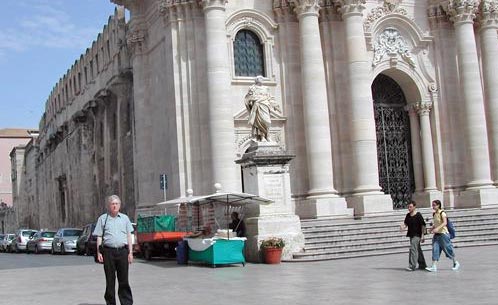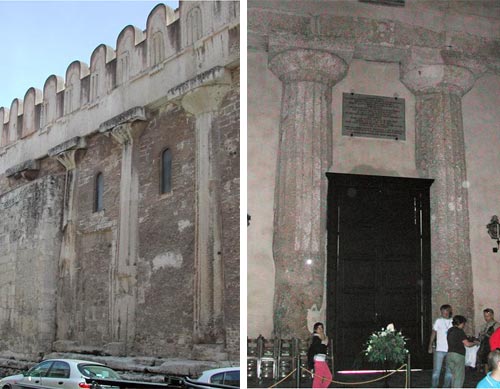Reuse is good, right? And the notion conjures in most of us an image of linking code modules. Which is why I was astounded to run into the following case, while touring the beautiful island of Sicily.

Here you see your intrepid tourist in front of the Duomo (cathedral) of Siracusa, the city where Archimedes lived, engineered, and famously died defending his sand drawings. The baroque facade is a late addition (18th century) and nothing to write home about; but to its left there’s something unique and bizarre…
Below, left, is a close-up of the left wall of the Duomo. Note the embedded Doric columns, visible with their abaci and architrave (don’t worry, I had to look that up myself). These are also visible on the inside of the church, as seen in the photo at right.

So what’s going on? Well, the church was built in the 7th century AD. The columns, however, predate it by more than a millennium; they are what’s left of a Greek temple dedicated to Athena, which was built in the 5th century BC. Rather than follow the destroy-and-recycle method often applied to preceding cultures, the Christians reused the framework of the temple as is, filling in the spaces between the columns!






reuse was quite common back in those days. most of the marble used in the vatican used to be part of the roman forum and coliseum. the coliseum was used as a stone and iron mine, which is one of the main reasons it’s falling down now.
Indeed, reuse was practiced all over the ancient world – we also see a lot of that here in the holy land. However, it usually follows the “destroy-and-recycle” system I mentioned – thus, the Vatican marble was plundered and transported away from the Forum, in what is better described as recycling, or secondary use. What makes the Siracusan cathedral unusual is that the Greek temple frame was left standing as it was and reused in situ.